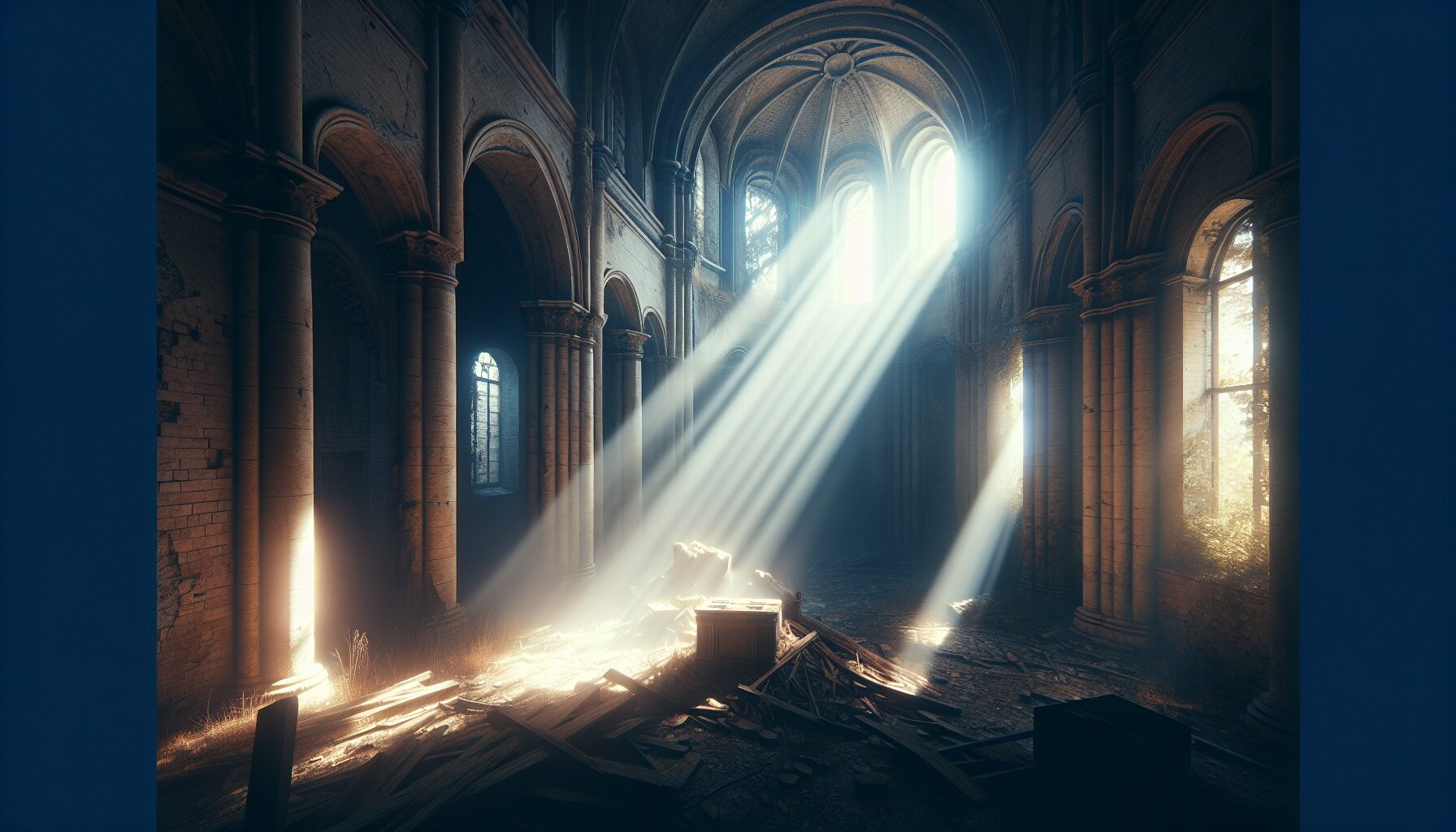The art of photography has long been about capturing moments of beauty, curiosity, and sometimes even desolation. Amongst the myriad of subjects, the photography of abandoned sacred spaces stands out as a poignant exploration of the intersection between architecture, history, and spirituality.
The Allure of Abandoned Sacred Spaces
These spaces, once bustling with life and devotion, now exist in a state of quietude, waiting to be rediscovered. Photographers are drawn to these sites for various reasons, be it their architectural grandeur, the stories they whisper, or the interplay of light and shadow that occurs naturally through the decay.
“There’s a melancholy beauty in these places, where time seems suspended,” notes The New York Times.
- Architectural Grandeur: The intricate designs of cathedrals, temples, and mosques are a testament to human ingenuity and devotion. Abandoned, they carry a ghostly elegance that’s both awe-inspiring and haunting.
- Stories Embedded in Silence: Each abandoned sacred site has its own story, etched into walls and worn pews, offering a window into different cultures and epochs.
- Lighting as a Natural Artist: Abandoned sites often feature broken roofs and windows, allowing natural light to seep in, casting ethereal patterns that photographers cherish.
The Techniques Behind the Lens
Capturing the essence of deserted holy places requires a blend of technical skill, artistic vision, and, often, a touch of luck. Here are some techniques photographers use to enhance their snapshots of these enigmatic sites:
- Long Exposure: Many photographers utilize long exposure to blur motion, like drifting clouds or shadows, adding a dreamlike quality to their images.
- High Dynamic Range (HDR): Given the often stark contrast between light and shadow in these spaces, HDR photography can help to balance these elements and bring out detail in both high and low exposure areas.
- Composition: Utilizing the natural lines created by architectural elements, photographers can guide the viewer’s eye through the image, enhancing the narrative behind the photograph.
Notable Photographers and Projects
Numerous photographers have dedicated their craft to exploring the haunting beauty of abandoned sacred spaces. Here are a few notable figures whose work offers profound insights into these spaces:
- Roman Robroek: Known for capturing abandoned places across Europe, Robroek’s work often focuses on the melancholic beauty of forgotten churches and cathedrals. His images evoke a sense of nostalgia and reverence.
- Matthias Haker: Haker’s atmospheric photography is renowned for its vibrant color and exquisite detail, bringing a sort of immortal vibrance to the deteriorating echoes of sacred spaces.
- Rebecca Bathory: Bathory’s series “Soviet Ghosts” explores abandoned sites across the former USSR, blending elements of beauty with decay. Her images serve not only as art but as documentation of political and cultural shifts.
The Challenges of Photographing Abandoned Spaces
While the rewards are clear, photographing these sites comes with its own set of challenges and sometimes ethical considerations:
- Access and Safety: Many of these sites are difficult to reach and may be structurally unsound, posing risks to explorers and photographers alike.
- Legal Restrictions: Gaining permission to enter and photograph can be a hurdle, as these sites are often on private property or have heritage status that restricts access.
- Ethical Considerations: There is a fine line between capturing beauty and intruding upon or disrupting a space that still holds significance for communities or individuals.
“When approaching buildings with sensitive histories, respect and awareness are key,” advises Photography Life.
The Impact of Photography on Preservation and Awareness
Photography plays a crucial role in the preservation of these forgotten spaces, raising awareness of their existence and historical importance.
- Documentary Purpose: Photographs can serve as historical records, capturing the state of a site before it deteriorates further or is restored.
- Public Awareness: Exhibitions and publications featuring abandoned sacred spaces can inspire public interest and, occasionally, efforts to preserve or restore these landmarks.
- Cultural Reflection: They offer society a cultural mirror, prompting reflection on themes of legacy, impermanence, and the passage of time.
The Future of Sacred Spaces in Photography
As the world changes, so too will the sacred spaces that punctuate its landscape. Technology offers new tools for capturing these places. Drone photography, for instance, allows for stunning aerial shots that reveal the larger context around isolated sanctuaries.
Furthermore, virtual reality and 3D mapping technology are opening up new frontiers in the documentation and experience of historical sites. These innovations offer enriched perspectives and allow wider accessibility to these remote locations.
As noted in Forbes, “New visual technologies promise not just preservation, but a democratization of access to the world’s forgotten wonders.”
Ultimately, the photography of abandoned sacred spaces is more than just a documentation of structures; it is an exploration of what these spaces mean to humanity. Through each image, a conversation continues—about history, decay, and the quiet, relentless pursuit of finding beauty in solitude.
In a world that’s constantly moving forward, these photographs remind us of what remains still and silent, inviting us to pause and appreciate the often-unseen currents of history and spirituality beneath the surface.

Comments